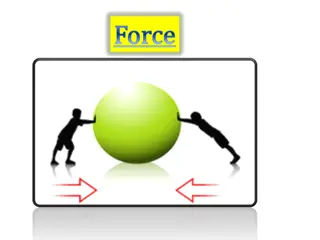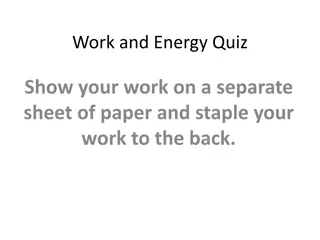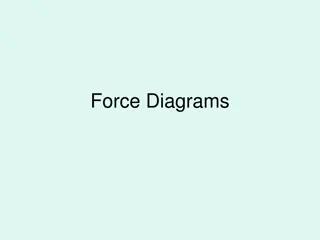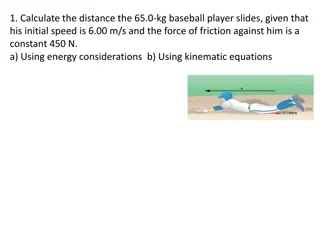Physics Problems: Work, Energy, and Forces
A helicopter lifts a 72 kg astronaut vertically from the ocean, calculating the work done by the helicopter and gravitational force, as well as the astronaut's kinetic energy and speed just before reaching the helicopter. Additionally, a block sent up a frictionless ramp's normal force is determined based on its initial speed and kinetic energy as a function of position.
Download Presentation

Please find below an Image/Link to download the presentation.
The content on the website is provided AS IS for your information and personal use only. It may not be sold, licensed, or shared on other websites without obtaining consent from the author.If you encounter any issues during the download, it is possible that the publisher has removed the file from their server.
You are allowed to download the files provided on this website for personal or commercial use, subject to the condition that they are used lawfully. All files are the property of their respective owners.
The content on the website is provided AS IS for your information and personal use only. It may not be sold, licensed, or shared on other websites without obtaining consent from the author.
E N D
Presentation Transcript
A helicopter lifts a 72 kg astronaut 15 m vertically from the ocean by means of a cable. The acceleration of the astronaut is g/10. How much work is done on the astronaut by (a) the force from the helicopter and (b) the gravitational force on him? Just before she reaches the helicopter, what are his (c) kinetic energy and (d) speed?
A block is sent up a frictionless ramp along which an x axis extends upward. The figure gives the kinetic energy of the block as a function of position x; the scale of the figure s vertical axis is set by Ks = 40.0 J. If the block s initial speed is 4.00 m/s, what is the normal force on the block?























